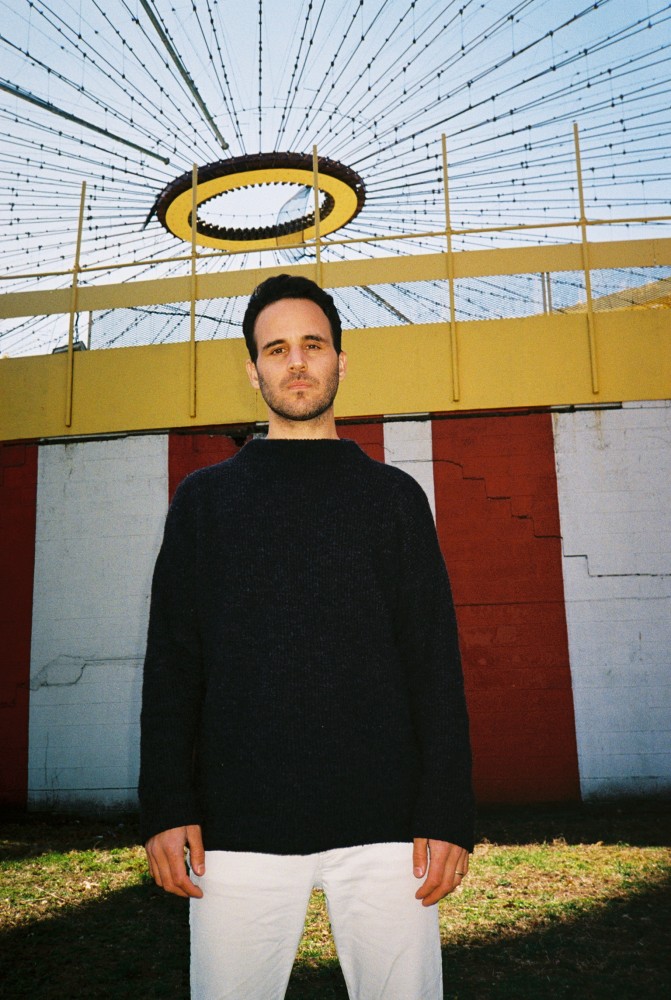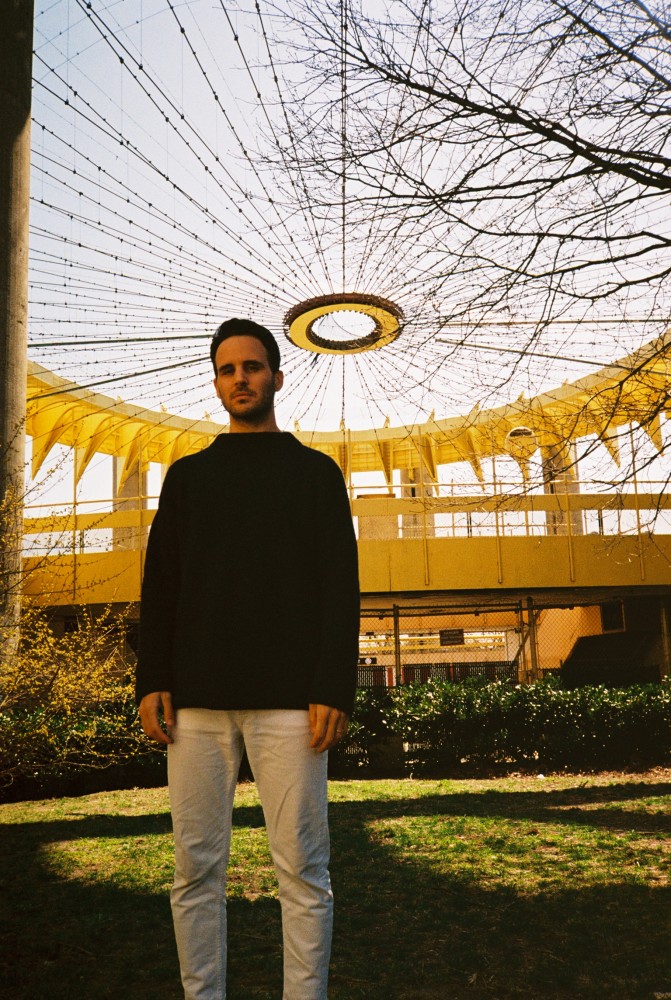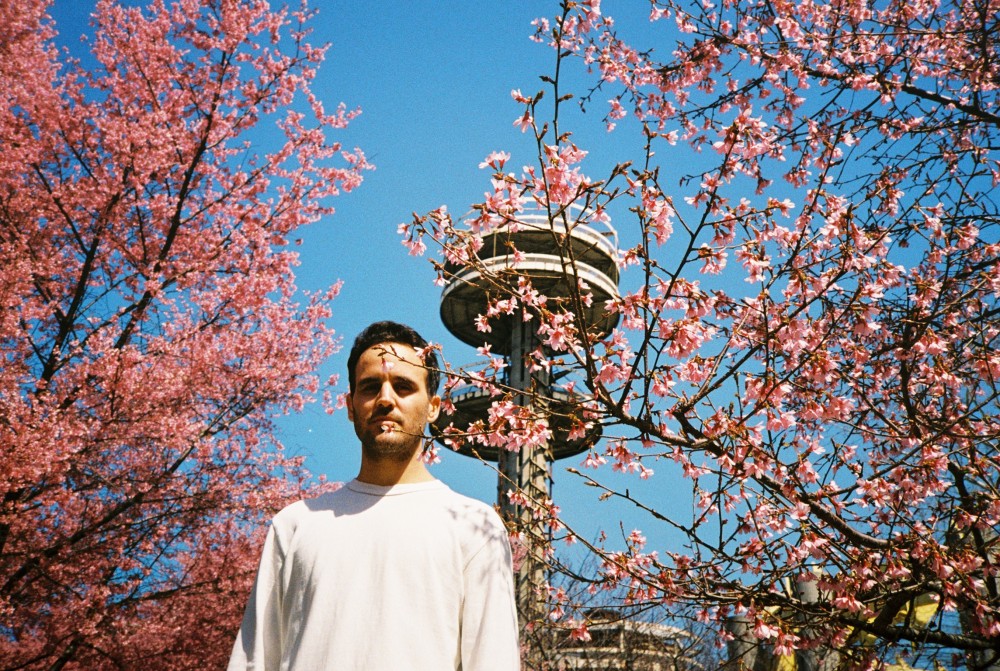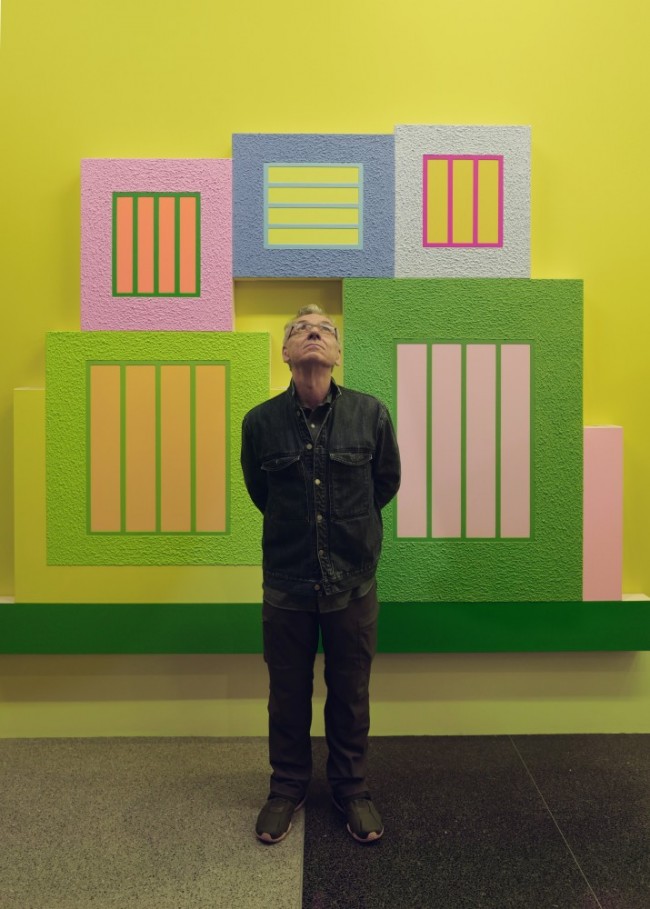INTERVIEW: The Guggenheim’s Troy Conrad Therrien On UFOs AND Transcendent Architecture

Troy Conrad Therrien. Photography by Benjamin Erik Ackermann for PIN–UP.
Troy Conrad Therrien, curator of architecture and digital initiatives at New York’s Solomon R. Guggenheim Museum, says he was “red-pilled” by Trump’s election. But this wasn’t the first time he’d had to recalibrate. Working in Silicon Valley when the dot-com bubble burst, he was sent into a tailspin; then he found himself in free fall again after the 2008 financial crash hit right as he was completing his studies at Columbia’s Graduate School of Architecture. But with Trump, “the farce of consensus reality was ripped away from me and I couldn’t put blinders back on.” Now, in his teaching and curating, Therrien is obsessed with examining what we can learn from the flip side of “consensus reality” — phenomena such as the rising number of UFO sightings, the hallucinogenic effects of DMT, or mushrooms falling from outer space.
Caroline Gaimari: During a recent lecture, you described how the UFO phenomenon is a good case study for the way aesthetics evolve. Can you explain?
Troy Conrad Therrien: My point was that instead of completely dismissing the UFO phenomenon, it’s more interesting to think with it. These experiences are considered strange or anomalous and yet more and more people are encountering them regularly. The same way you can “think with” DMT or psilocybin mushrooms, we could universalize some of these experiences that are — from a Western perspective of what counts as “real” — considered strange or anomalous and yet there are more and more people encountering them regularly. Those encounters are starting to shape society; Millennials going to a Pagan festival called Burning Man and doing a bunch of psychedelics and then going back to their day jobs at Google to tinker with the search engine and the AI that structure how we access information. Right now I am obsessed with things that are magical, or strange, or seem to be anomalies — this includes spirits, and even time travel. What was once the domain of fiction is seeping into the domain of non-fiction. The phenomenon that most overlaps with the various forms of the anomalous seems to be in the UFO.
Give me the Cliff’s Notes.
Ufology 101: The story goes back to approximately 1947. This would be the time most Ufologists would say that there was some sort of crash of an alien, extraterrestrial or anomalous craft somewhere in the New Mexico area, and it goes from there. UFO history is a mix of espionage, conspiracy theory, and high-energy physics, but I am most interested in the psychic stuff. The person reporting their UFO encounter will almost always note moments of missing time in their memory, strange encounters they can’t account for, or things that happen to them afterward, as if they were zapped with a sort of psychic ray that changed the morphology of their mind and its relation to spacetime.
For the past two and a half years, I have been doing what my friend Gordon White calls “Conspiracy Yoga.” If anything is possible, then you should hunt for the most extreme and intriguing cases, and use that as a way to train your mind to be prepared for strange ideas, and then weave those in to what you actually do. So, for me as a curator, I write things, I make exhibitions, I teach at a university. I wouldn’t be living my best life if I weren’t trying to weave those anomalous observations into the most straight, conservative, mainstream environments.

Troy Conrad Therrien. Photography by Benjamin Erik Ackermann for PIN–UP.
How is Conspiracy Yoga different from Conspiracy Theory?
Conspiracy Yoga is skinny-dipping in the ponds of Conspiracy Theory from time to time, to open your mind up and explore these theoretical possibilities flexing your critical thinking muscle in equal measure to your bullshit radar. The problem with conspiracy theory is that it often becomes a kind of addiction, which hits hardest when you are in a state of susceptibility. The Trump election is a good example: a massive, disenfranchised population in the US who have seen public services be totally gutted, they are out of work, they’ve turned to Oxycontin to deal with their pain, and politicians on either side of the fence are basically not playing ball for any of them. So, they listen to talk radio all day and get sucked in to things that do make sense – belief in apocalyptic evangelical Christianity, or that the Illuminati or the royal family controls a secret world government, or the idea that the earth is flat. These ideas become gospel because they are easier to grok than the actual mechanisms turning your life into a shit sandwich. So Conspiracy Theory is dangerous because if you’re not able to dip in and dip back out, and keep your sanity and critical thinking hat on, you can end up in a hall of mirrors.
In your essay “Effective Architecture”, you talk about how the Bilbao Guggenheim basically rocked people’s perception of what a building could be, a sort of infection of the mind. Are there other examples of buildings that have affected our subconscious?
In 1666, the City of London burned to the ground. Just days after, the architect Christopher Wren produced a full plan for a new London based on what would later emerge as Masonic principles. This led some people — conspiracy theorists perhaps — to believe that he might have had a hand in starting that fire. Ultimately, they didn’t go with his plan for London, but they did give him the commission for rebuilding St. Paul’s Cathedral. He thought it was such a potent building, laden with symbolism and iconography, that he kept it under scaffolding during construction, fearing it might be protested on the grounds of something like witchcraft.
But now witchcraft is cool.
What do you do, on a Saturday night, when you think that your president is in cahoots with Russia and is destroying the planet by deregulating industry and is a pussy-grabbing misogynist, you have no real power, and you see that a bunch of alt-right fuckbois on the Internet brought this into reality because they had started doing their own brand of e-magic to elect him? You turn to magic yourself! It’s part of popular culture now — Lana Del Rey is tweeting the details for a mass hex, Azealia Banks is Instagramming a video from the closet where she’s cleaning out her ritual chicken sacrifices, Beyoncé is getting accused of witchcraft by an ex-drummer. One of the hottest forms of resistance in America is “hex the patriarchy.” So as all this is welling up in the popular imagination. As witchcraft renders through popular culture, science is losing its monopoly on explaining things.
Thinking about what comes after scientific consensus reality, what are experiences of higher consciousness by definition?
Psychedelics pioneer Tim Leary’s formula for altering your state of consciousness is “set,” which is your mindset, “setting” which is the environment or the architecture, and then the drug.
Do you have to take psychedelic drugs to tap into this?
I think not. You just have to change your state of consciousness — drugs are a shortcut. The test case I’m interested in is: could we get there via architecture, or “setting,” alone? For the last 20 years, it seems like architecture got bored of the building scale and shifted focus to the city scale because the whole world was urbanizing. I think going in the other direction is more interesting. I’m going to teach a studio at the Architectural Association in London this year about designing and building float-tank isolation chambers. The idea is based on the work of Caltech-trained scientist John C. Lilly in the 50s, 60s, and 70s. Among his obsessions was isolating the brain from external stimulation, so he invented the first isolation tank, a dark sound-proofed chamber full of water that had had a bunch of salt dumped in it so he could float. The more time he spent in this environment where he was relieved of gravity, the more his mind would start to play tricks on him because his body could no longer position itself in space or time. After a couple of hours floating, he could have an experience akin to the effects of LSD. Lilly invented psychedelic architecture for the 20th century. What he fundamentally came up with was that our minds are limitless and our bodies are limited. It’s a kernel of the effect that pyramids and temples and possibly Gothic cathedrals were trying to have on the human body. If you can recontextualize architecture as having the capacity for transcendent effect, then you can ideally raise the bar of what people expect from architecture.

Troy Conrad Therrien. Photography by Benjamin Erik Ackermann for PIN–UP.
We met in Barcelona, home of Gaudí’s Sagrada Familia. When architects investigate transcendence or try to connect an audience to something bigger, why does it always end up being a church? If you talk about a toilet, it had better be pretty damn functional. But what’s the function of a church?
It’s literally a place to tell stories over and over. Not all architects get commissioned to design churches, nor would all architects want that commission. So, when you look at Gaudí’s Sagrada Familia — a crazy, melting, biomorphic, kaleidoscope, hallucinatory church, unfinished 100 years later — you have to ask yourself, what was he on?
I read that Gaudí had tried mushrooms.
(Author and magic specialist) Gordon White defines the mushroom as an inter-dimensional, intergalactic species flying around the cosmos, hacking the nervous systems of other organisms in order to experience reality through their consciousness. Taking mushrooms, for him, is like dancing with an alien — an alien because you actually can find it in outer space. These spores are extremophiles, they can exist in freeze-dried form in outer space and as our planet plows through the solar system, something like 60 tons of matter fall to the surface of the Earth daily, some of which contains bio-matter and DNA from space, and that could be proven to have mixed with our DNA. The mushroom is considered to be one of these things. It’s really an underutilized historiographical lube that needs to find its way into more of the cracks of discourses that have prematurely hardened.
Interview by Caroline Gaimari.
Photography by Benjamin Erik Ackermann for PIN–UP.
A version of this interview was published in PIN–UP 27, Fall Winter 2019/20.



